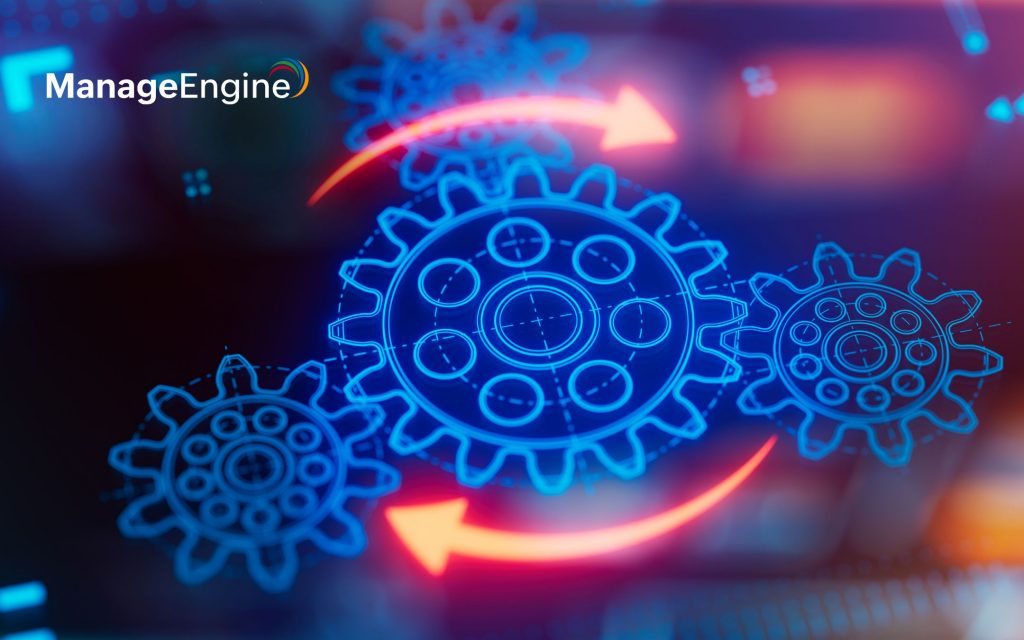Five worthy reads is a regular column on five noteworthy items we’ve discovered while researching trending and timeless topics. This week we are exploring the concept of hyperautomation and its role in driving your business towards success.

In today’s dynamic business landscape, organizations are witnessing a profound shift as they redefine their operational strategies. It’s no longer merely about enhancing efficiency or cutting costs; it’s about fundamentally rewriting how business is conducted. At the forefront of this transformation is hyperautomation a paradigm that extends beyond traditional automation into uncharted realms of operational innovation.
Hyperautomation integrates a strategic blend of digital technologies such as RPA, AI, and ML. Unlike conventional automation that focuses on routine tasks, hyperautomation extends its reach to encompass decision-making processes, both structured and unstructured. This evolution marks a pivotal moment in the journey towards operational excellence.
In this blog post, we delve deep into the essence of hyperautomation, a phenomenon reshaping organizational DNA. We’ll explore its definition, evolution, and transformative impact on businesses worldwide. Beyond cost reductions, hyperautomation drives substantial revenue growth, enhances customer experiences, and boosts operational agility. It enables organizations to innovate faster, improve decision-making through data-driven insights, and ensure compliance with regulatory standards. Join us as we navigate through the intricacies of hyperautomation and uncover its potential to revolutionize your business strategy for a brighter tomorrow.
Let’s explore five compelling articles that highlight the significance of hyperautomation and its relevance across diverse industries in achieving business success.
- Hyperautomation Expected To Reach Up To $860 Billion By 2025
Many companies today face the persistence problem of manual processes despite the adoption of process orchestration software. Manual workflows continue to impede business efficiency and cost-effectiveness significantly. In response to these challenges, leadership teams are increasingly turning to technologies such as RPA, intelligent process automation (IPA), and specialized AI solutions. However, to fully harness the potential benefits of these technologies, there is a growing advocacy for establishing a chief automation officer role.
This strategic position would oversee the deployment of digital workers like RPAs and IPAs across departments, integrating advanced AI solutions to automate tasks from routine to complex. By embracing automation comprehensively, companies aim to accelerate processes, reduce operational costs, and optimize revenue and margins. Proactive planning and seamless integration are necessary to maximize automation’s transformative impact on sustainable business growth.
- The era of Hyperautomation – making smarter automation choices
Hyperautomation is highlighted for its transformative impact. This approach integrates technologies like RPA, AI, ML, and intelligent business process management suites. It enables organizations to efficiently automate complex tasks and processes, enhancing operational speed while reducing errors. Hyperautomation goes beyond basic task automation to encompass entire processes and business ecosystem automation, addressing challenges posed by traditional RPA, especially in handling unstructured data. Advanced AI tools such as NLP, optical character recognition, and digital twin of an organization are leveraged to optimize operations. With its projected growth, hyperautomation is poised to revolutionize business efficiency across diverse industries.
- Top 4 Trends in Enterprise Hyperautomation in 2024
Hyperautomation is transforming modern enterprises by optimizing efficiency and flexibility through key trends. Intelligent automation integrates AI technologies like ML and NLP to automate tasks comprehensively, handling both structured and unstructured data. Process mining offers deep insights into business processes, identifying areas for automation and improving efficiency. Digital twins provide virtual representations of organizational ecosystems, allowing real-time analysis and predictive simulations. Low-code and no-code platforms democratize automation, enabling non-technical users to develop and deploy solutions quickly. These trends highlight a strategic shift towards intelligent automation that drives sustainable growth and competitive advantage.
- How Can Hyperautomation Transform the Insurance Industry?
Digitalization is transforming the insurance industry by using advanced technologies like AI, ML, and process intelligence to drive efficiency and innovation. By 2025, many insurance processes could be automated, making hyperautomation essential. This approach streamlines claims processing, underwriting, customer service, and policy administration. Hyperautomation platforms expedite claims by filtering out fraud and ensuring compliance. ML models enhance underwriting accuracy, while automated customer service portals improve accessibility. In policy administration, analytics-driven insights help launch new products and scale operations. Embracing these advancements, hyperautomation becomes a strategic necessity for insurers aiming to lead in a digital market.
- Hyperautomation is the future for the public sector
Organizations are increasingly embracing hyperautomation, an advanced evolution of operational efficiency driven by AI and ML. Gartner projects that 70% of organizations worldwide will adopt structured automation by 2025, up from 20% in 2021. Effective hyperautomation requires cohesive integration and ongoing maintenance to avoid disjointed systems.
Human oversight is crucial for refining automation and ensuring AI models receive quality data. Building a unified automated environment involves collaboration across IT, business, legal, and financial sectors to identify opportunities and select tools. Technologies like RPA and conversational AI enhance workflows, improving user interactions and backend processes. For the public sector, automation modernizes outdated systems, offering efficient, resource-saving solutions. Successful hyperautomation depends on strategic planning, stakeholder engagement, and a robust framework tailored to organizational needs.
The rapid evolution of hyperautomation stands poised to revolutionize industries worldwide, driven by a pressing need for digital transformation amid talent shortages, economic pressures, and competitive dynamics. With the hyperautomation software market projected to soar to nearly $1.04 trillion by 2026 at a robust CAGR of 11.9%, organizations are increasingly turning to integrated AI-driven solutions like ML, NLP, and process mining to streamline operations and enhance productivity. As CEOs prioritize productivity and digital business models become ubiquitous, the demand for hyperautomation enablement will continue to surge, reshaping business landscapes and paving the way for unprecedented growth and innovation across sectors.